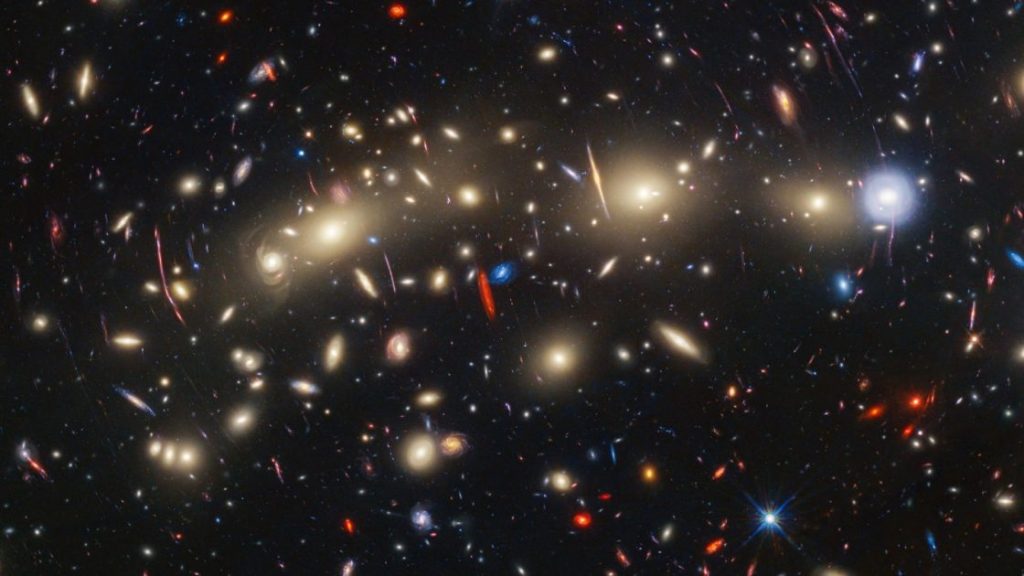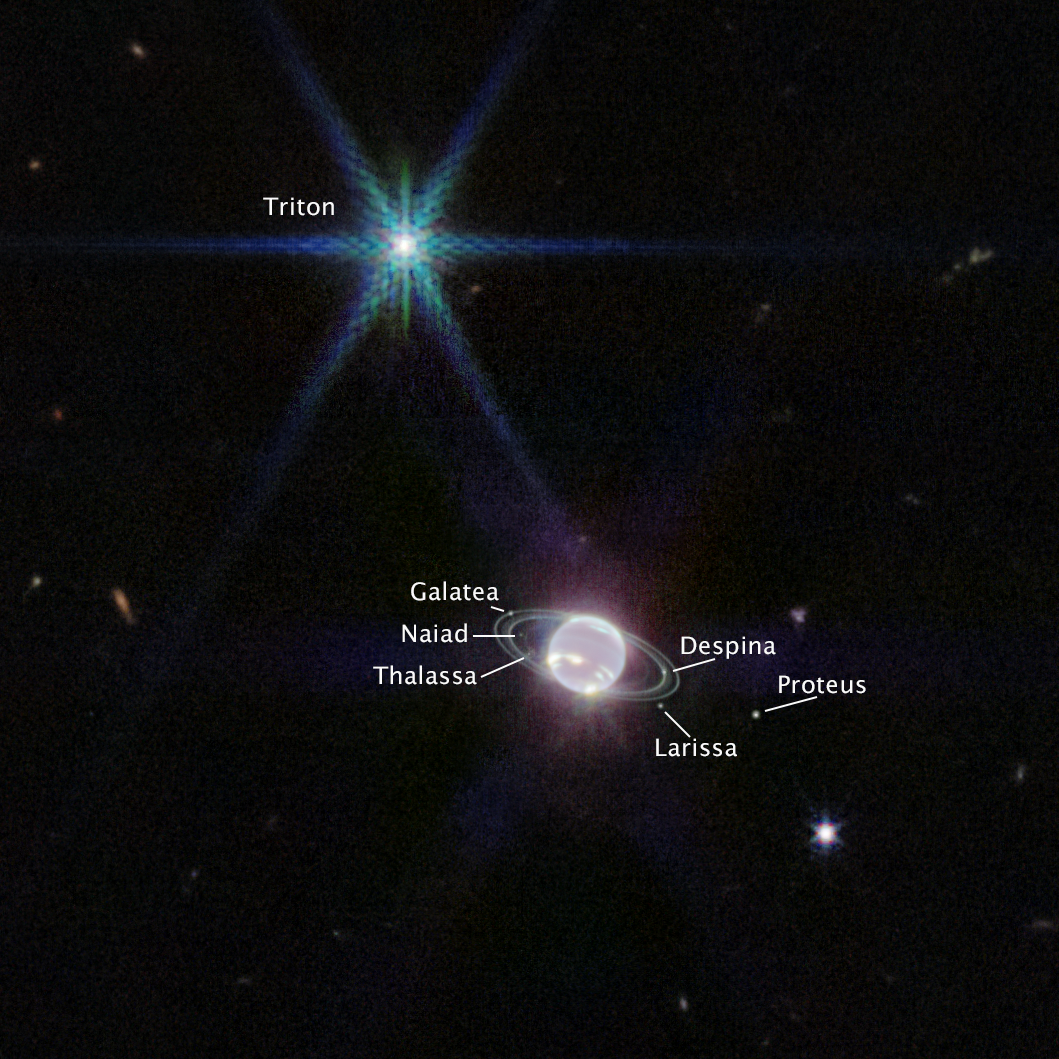NASA’s Webb, Hubble present an enigmatic view of MACS0416, a vibrant cluster of galaxies
The combination of NASA’s James Webb Space Telescope (JWST)’s infrared vision and the Hubble Space Telescope’s visible-light observations has created a vivid panorama of the Christmas Tree Galaxy Cluster, officially named MACS0416. Located 4.3 billion light-years away, this vibrant cluster of galaxies is adorned with flickering “Christmas lights” – 14 new transient objects discovered by the JWST.

Similar to cosmic fireworks, these temporary celestial events brilliantly illuminate before fading, leading Haojing Yan, an associate professor at the University of Missouri, to fittingly christen the cluster as the Christmas Tree Galaxy Cluster. The collaboration between the JWST and the Hubble Space Telescope enabled astronomers to identify an unprecedented number of transients.
The light from MACS0416 embarked on its journey when our solar system was a mere 300 million years old, making it typically too faint for detailed observation. Yet, the JWST employed a technique rooted in Einstein’s theory of general relativity, specifically gravitational lensing. This phenomenon, proposed by Einstein in 1915, involves the idea that massive objects warp space-time, acting as natural magnifying glasses. In the case of the Christmas Tree Galaxy Cluster, gravitational lensing allowed the JWST to discern even the faintest details, offering a unique view of stars situated far beyond our direct visual reach.
“Right now, we have this rare chance that nature has given us to get a detailed view of individual stars that are located very far away,” Haojing Yan explains. The JWST, utilizing gravitational lensing, provides an unprecedented opportunity to scrutinize the universe’s earliest galaxies, with the Christmas Tree Galaxy Cluster serving as its latest cosmic canvas.
In their exploration of this galactic puzzle, astronomers stumbled upon more than just transients. Two supernova explosions, signaling the end of stars’ lifecycles, were identified, offering valuable insights into the galaxies hosting these cosmic fireworks. In addition to this, the Christmas Tree Galaxy Cluster harbors a colossal star named “Mothra,” visible when the universe was a mere 3 billion years old. Magnified by a factor of at least 4,000, Mothra’s brilliance captured the attention of astronomers, prompting them to christen it after the iconic Japanese cinema creature.
Despite the passage of nine years since its initial sighting by the Hubble Space Telescope, Mothra’s galaxy and its magnifying object maintain their alignment. This unusual stability challenges conventional astronomical expectations, prompting further investigation into the nature of the lensing object and its characteristics.
As Yan notes, “We’ll be able to understand the detailed structure of the magnifying glass and how it relates to dark matter distribution.” This extraordinary revelation, made possible by the JWST and Hubble collaboration, underscores the significance of ongoing astronomical exploration and the potential for unraveling the mysteries of the cosmos.
The scientific findings of this cosmic odyssey were detailed in two papers: Yan et al. paper and Diego et al. paper. The former is accepted for publication is accepted for publication in the journal Astronomy and Astrophysics and the latter in The Astrophysical Journal.
The James Webb Space Telescope, a global initiative led by NASA in collaboration with ESA and the Canadian Space Agency, serves as the world’s premier space science observatory. It explores mysteries within our solar system, gazes at distant exoplanets, and delves into the enigmatic structures and origins of the universe. On the other hand, the Hubble Space Telescope, a joint project between NASA and ESA, is managed by NASA’s Goddard Space Flight Center and conducts science operations through the Space Telescope Science Institute in Baltimore, operated for NASA by the Association of Universities for Research in Astronomy in Washington, D.C.


